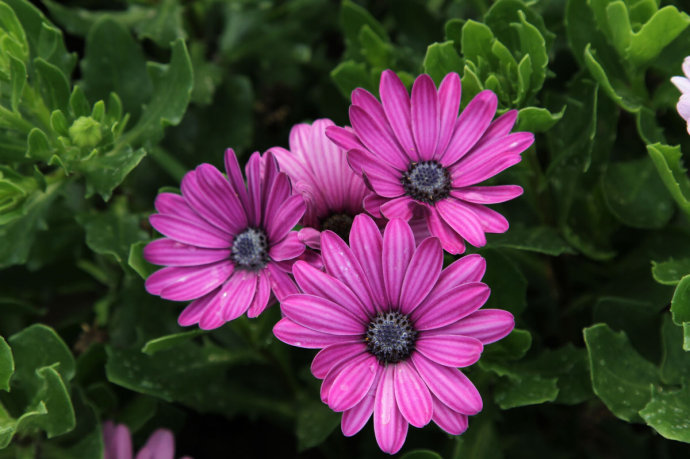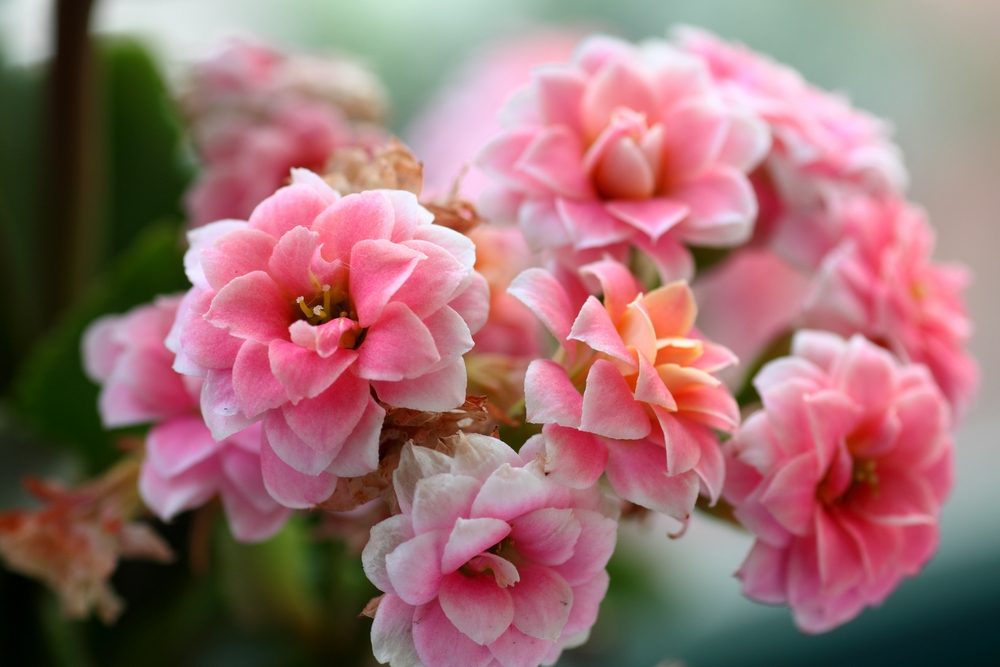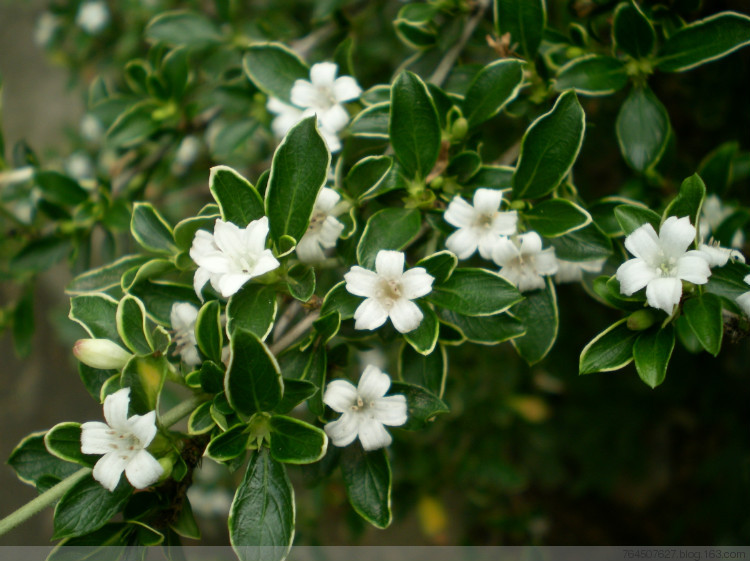Culture methods and precautions of South African marigold pictures of South African marigold
Is South African marigold imported from South Africa? Why South African marigold is called South African marigold. South African marigold, alias hibiscus, is a plant of the genus Chrysanthemum of Compositae. South African marigold is a perennial herbaceous flower with perennial roots of Compositae, which is native to South Africa. In recent years, it was introduced into China from abroad for 2012 herbaceous flower cultivation. Dwarf species have 20-30 cm in height, green stems, heads, corymbose in most clusters, white, pink, red, purplish red, blue, purple and other colors. Flowers are single, flower diameter is 5-6cm, and 1000 seeds weigh about 11 grams. The plant height of the same high-growing species is 60cm, which is a subshrub and can be cultivated as cut flowers in the original area. Next, the editor of the network will introduce to you how to raise marigold in South Africa.

Culture methods and precautions of South African marigold pictures of South African marigold
Xiyang, moderate cold tolerance, can tolerate a low temperature of-3 ℃-5 ℃. Resistant to drought. Like loose and fertile sandy loam. It performs better in a moist and well-ventilated environment. Strong branching, no need to pick the heart. Early flowering and long flowering period. Low temperature is beneficial to flower bud formation and flowering. Areas with mild climates can grow all year round.
South African marigold is a rare flower material whether it is used as a potted flower desk or as a landscaping in early spring. If it is taken as a part of the flower border and set off against the green grass and strange stone, it can better reflect its harmonious natural beauty.
South African marigold has a long flowering period, strong adaptability, easy cultivation and simple maintenance. Like other varieties of grass flowers, strong seedlings can be cultivated after sowing seeds. The suitable temperature for germination is 18-20 ℃, and it can germinate in 7-10 days. Cultivation techniques:
In the germination stage-preparation stage, the pH value of the matrix is 6.2-6.5, and the pH value lower than 6.0 can lead to poisoning of iron and sodium.
Note: giving light for a short period of 2 weeks after sowing (9 hours per day) can promote marigold plants to blossom in a short and strong state.
Germination stage-in the first stage, the radicle appeared on the 2nd day of lmer.
Appearance characteristics: at the end of the first stage, radicles and cotyledons appeared.
Moisture: moderate moisture content, do not soak, cover the seeds with a layer of frogstone to keep moisture.
Temperature: 22 Mel 24 ℃, effective concentration: < 0.5
Light: no light is needed.
Germination period-stage 2
Appearance characteristics: at the end of the second stage, the root length was 1.27m ~ 2.54 cm, the cotyledons were fully grown, and the germination process was completed.
Moisture: the matrix is slightly wet and should not be soaked.
Substrate temperature: after the appearance of dry leaves, the temperature decreased to 20 ℃ 21 ml.
Chemical fertilizer: application of 50-75ppm calcium-containing nitrogen fertilizer.
Effective concentration of matrix: 0.5ml 0.75
Light: the amount of light does not exceed 25000 lux, high light will cause the plant to mature prematurely, and short-term light can make the plant blossom in a short and strong state.
Germination period-stage 3
Appearance characteristics: at the end of the third stage, the root length was 3.8l-5.08 cm, the plant height was 1.27Mel 2.54 cm, and the first true leaf appeared.
Moisture: moderate moisture content, excessive drying makes the plant blossom prematurely, and continuous drying will lead to the shedding of buds. The soaked matrix will cause the root system to develop imperfectly.
The substrate temperature is 18 ℃ and 20 min.
Chemical fertilizer: 1mi twice a week, nitrogen fertilizer 150ppm.
Effective concentration of matrix: 0.75Mi 1.0
Lighting: see stage 2
Germination period-stage 4
Appearance characteristics: at the end of the fourth stage, the root system could firmly support the plant, and more than 2 true leaves appeared.
Moisture: see stage 3. Soaked matrix or excessive ammonia fertilizer can lead to over-rapid plant growth.
Substrate temperature: if the leaf is overextended, reduce the temperature to 17 ℃ 18 min.
Fertilizer: see stage 3
Matrix effective concentration: see stage 3
Nutrients: calcium and boron are of great significance to plant growth at flowering stage. The shedding of flower buds shows that these two nutrients are deficient, and too much ammonia fertilizer will delay the appearance of flower buds or reduce the number of flower buds.
Lighting: see stage 2
Growth regulation: African marigold was sensitive to Bmurine Sumagic and Bonzi, and regulated its growth after the appearance of 4 true leaves.
Growing period
Before the root system of marigold is fully grown, the delay of transplantation will lead to earlier flowering.
The pH value of matrix is 6.2 Mel 6.5. African marigold can be used to detect low pH value. The low pH value (< 6. 0) was characterized by yellow leaves and scorched leaf edges.
Moisture: let the matrix dry between two times of watering. Do not let the matrix dry, the soaked matrix will lead to overgrowth of the plant.
Temperature: 18 ℃ 23 ℃ during the day and 13 ℃ at night. The high temperature makes the flowers smaller. The Primrose series is sensitive to cool climates. Yellowing may occur when the climate is too low in early spring, and if the humidity increases, the plant will appear healthy green.
Chemical fertilizer: take turns to apply 150-200ppm calcium fertilizer and ammonia fertilizer. However, excessive application of ammonia fertilizer will cause the plant to grow too fast.
Nutrients: the appearance of withered yellow spots in yellow leaves and leaves is a sign of iron poisoning, keeping the pH above 6.0 and preventing the application of too much iron.
Growth regulation: African marigold is sensitive to Bmurine Sumagic and Bonzi. Antigu is a natural dwarf and does not need growth regulation.
Common insect pests: aphids
Common disease: rotting root
Planting arrangement: the planting arrangement depends on the season and weather. In most areas, the production of African marigold can be completed within 10-12 weeks, and the 10.16 cm pot will take another 2 weeks.
Flower bed performance: the warm tone of marigold matches the bright colors of sunflower and morning glory. The Inca and Rerfection series can be planted in the center of 25.4cm-30.48cm. Antign series is natural dwarf, suitable for flower bed border decoration, and Antigna can also be planted in the center of 25.4cm flower bed.
Sowing time of South African marigold, picture appreciation of South African marigold
South African marigold is a kind of flower with well branched base and round plant shape. It has dark green leaves and is easy to cultivate. It is a kind of cold-season flower and is on the market very early. What is South African marigold? South African marigold is a perennial herbaceous flower with perennial roots of Compositae. It is native to South Africa and has been introduced into China for flower cultivation in recent years. The dwarf species has a height of 20 cm, a green stem and a capitate inflorescence. Most of the clusters are corymbose, with white, pink, red, purplish red, blue, purple and other colors. The flower is single, the flower diameter is 5-6cm, and the seed weight is about 11 grams. The plant height of the same high-growing species is 60cm, which is a subshrub and can be cultivated as cut flowers in the original area. Growth habits South African marigold is an herbaceous flower, the origin is South Africa, like sunshine, medium cold resistance like fertile land, grow better in moist, ventilated environment, strong branches, early flowering, long flowering period, can grow throughout the year. Used in South African marigold, whether as a potted flower desk or early spring landscaping, it is a rare flower material. If it is taken as a part of the flower border and set off against the green grass and strange stone, it can better reflect its harmonious natural beauty. The sowing time of South African marigold: November to January. Acupoint plate: choose 72, 128 or 200 acupoint plate according to the purpose of production. Sowing method: sowing on demand, one seed per hole. Matrix: mixed with peat ∶ vermiculite = 3 ∶ 1, pH 6.2-6.5, too low will lead to poisoning of some metal elements (such as iron, sodium, etc.). Drain the hole plate the day before sowing and set aside. Covering material: cover seed with medium-grained vermiculite to facilitate ventilation and water permeability. In order to ensure the temperature and humidity needed for germination after sowing, plastic film can be used to cover the hole plate. South African marigold cultivation and management is simple, and there are few diseases and insect pests. The common pests are aphids, which can be controlled by spraying plants with 800-1000 times of 80% dichlorvos EC or 1000 times at a time. One of the common diseases is rotten roots, which are mostly caused by too much watering. It can be prevented by properly controlling water and keeping the matrix slightly wet and dry. Once it is found that the root is damaged, the basin should be changed and the matrix should be updated in time. The second is yellow leaves, the causes and control measures of yellow leaves are as follows: ① yellow leaves are mainly young leaves, often with spots. The reason is that the pH value of the substrate is too low, resulting in iron poisoning, which can be adjusted by pouring appropriate concentration of lime water; the temperature of the ② seedling stage is too low, which can appropriately increase the night temperature; insufficient application of ③ nitrogen fertilizer can appropriately increase the amount of nitrogen fertilizer. Sowing time of South African marigold, picture appreciation of South African marigold
South African marigold is a kind of flower with well branched base and round plant shape. It has dark green leaves and is easy to cultivate. It is a kind of cold-season flower and is on the market very early. What is South African marigold? South African marigold is a perennial herbaceous flower with perennial roots of Compositae. It is native to South Africa and has been introduced into China for flower cultivation in recent years. The dwarf species has a height of 20 cm, a green stem and a capitate inflorescence. Most of the clusters are corymbose, with white, pink, red, purplish red, blue, purple and other colors. The flower is single, the flower diameter is 5-6cm, and the seed weight is about 11 grams. The plant height of the same high-growing species is 60cm, which is a subshrub and can be cultivated as cut flowers in the original area. Growth habits South African marigold is an herbaceous flower, the origin is South Africa, like sunshine, medium cold resistance like fertile land, grow better in moist, ventilated environment, strong branches, early flowering, long flowering period, can grow throughout the year. Used in South African marigold, whether as a potted flower desk or early spring landscaping, it is a rare flower material. If it is taken as a part of the flower border and set off against the green grass and strange stone, it can better reflect its harmonious natural beauty. The sowing time of South African marigold: November to January. Acupoint plate: choose 72, 128 or 200 acupoint plate according to the purpose of production. Sowing method: sowing on demand, one seed per hole. Matrix: mixed with peat ∶ vermiculite = 3 ∶ 1, pH 6.2-6.5, too low will lead to poisoning of some metal elements (such as iron, sodium, etc.). Drain the hole plate the day before sowing and set aside. Covering material: cover seed with medium-grained vermiculite to facilitate ventilation and water permeability. In order to ensure the temperature and humidity needed for germination after sowing, plastic film can be used to cover the hole plate. South African marigold cultivation and management is simple, and there are few diseases and insect pests. The common pests are aphids, which can be controlled by spraying plants with 800-1000 times of 80% dichlorvos EC or 1000 times at a time. One of the common diseases is rotten roots, which are mostly caused by too much watering. It can be prevented by properly controlling water and keeping the matrix slightly wet and dry. Once it is found that the root is damaged, the basin should be changed and the matrix should be updated in time. The second is yellow leaves, the causes and control measures of yellow leaves are as follows: ① yellow leaves are mainly young leaves, often with spots. The reason is that the pH value of the substrate is too low, resulting in iron poisoning, which can be adjusted by pouring appropriate concentration of lime water; the temperature of the ② seedling stage is too low, which can appropriately increase the night temperature; insufficient application of ③ nitrogen fertilizer can appropriately increase the amount of nitrogen fertilizer. More Information "| what does White Rose mean | what plants are protected against computer radiation | how to raise succulent plants | Indoor foliage plants | | efficacy and function of gynostemma pentaphyllum | efficacy and function of honeysuckle | handmade roses | pictures of lotus flowers | | efficacy and function of sweet-scented osmanthus tea | cultivation method of June snow | discount of lilies | flowering period of lavender |
- Prev

Are longevity flowers poisonous? culture methods and matters needing attention of longevity flowers
Longevity flower, I think it is a good choice to give it a gift. Because a lot of people may like the name. Longevity flower (KalanchoeblossfeldianacvtomThumb) alias Shouxing flower, fake Sichuan lotus, Christmas cabbage, dwarf cabbage
- Next

Pictures of June snow in Phnom Penh how to cultivate June snow in Phnom Penh
June snow in Phnom Penh, the name is very literary and artistic. June snow in Phnom Penh is a cultivated variety of Rubiaceae. It is originally from the provinces in the south of the Yangtze River. Like the sun, but also more shade-tolerant, more cold-resistant, strong drought tolerance, lax requirements on the soil, growing well in fertile, moist acid soil. June snow in Phnom Penh is usually propagated by cuttings.
Related
- Fuxing push coffee new agricultural production and marketing class: lack of small-scale processing plants
- Jujube rice field leisure farm deep ploughing Yilan for five years to create a space for organic food and play
- Nongyu Farm-A trial of organic papaya for brave women with advanced technology
- Four points for attention in the prevention and control of diseases and insect pests of edible fungi
- How to add nutrient solution to Edible Fungi
- Is there any good way to control edible fungus mites?
- Open Inoculation Technology of Edible Fungi
- Is there any clever way to use fertilizer for edible fungus in winter?
- What agents are used to kill the pathogens of edible fungi in the mushroom shed?
- Rapid drying of Edible Fungi

